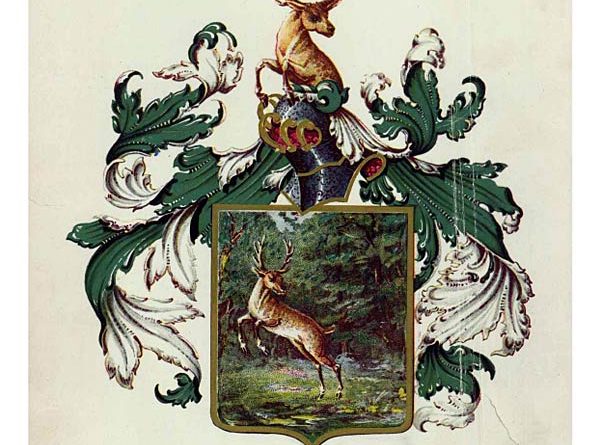13
regard of the countrymen and peasants. As for the nobilitie, gentrie, and churchmen, they were forced to purchase letters of grace and pardon at a deare rate.” 1
The people of Groningen, aware of the jeopardy of the city by the nearness of the invaders, began to prepare for its defence, should the Saxon duke undertake to besiege it. This he lost no time in doing, but when the enemy attempted to assault the place, its defenders displayed such valor and knowledge of the art of war as surprised the German troops, who were not only repeatedly repulsed but several times driven away from the walls by the armed people of Groningen sallying unexpectedly upon them from the gateways of the city. Incidents of the siege of Groningen are also detailed by the author of the rare English history of the Netherlands :
“The duke foreseeing that if hee did not in like sort subject the towne of Groningen and the countrie thereabouts hee should never injoy Friseland quietly. Hee went the last of July, 1500, to besiege it. Hcc planted his campe at Auwert, Seewert, and on the side of the port of Bottoringhe. Hee battered it [the gate] furiously as well as the walles and ramparts with his cannon as [he did] the houses in mine with his great mortcrs. The inhabitants had a good garrison of souldiers who made many brave sallies upon his campe.
One day as hee himselfe was taking a marke with a cannon, a shot of artillerie came from the towne, who, although he were not toucht with the bullet yet was hee sore wounded with the splinters of the carnage and the gabions, and was carried to his lodging.
After that hee had besieged it six weeks, the plague also becing very whot in his campe, and having yet prevailed little, hee made a suspension of armes, and raised his campe, and then caused himselfe to be transported to Emden, where hee died the twelfth of September.” 2
Whatever views may have been entertained by different Dutch historians respecting the obedience or disobedience of the people of Groningen in regard to the enjoinment of the arbitration commissioners, in their decree, in 1338, that the stone wall surrounding the city should be demolished and replaced by a wooden one, itis a fact, that, in 1469, the wall,at that time encircling the city, was strengthened by the erection of six massive towers and rendered more defensible by the excavation of a new moat along it. Other additions to the city’s fortifications were made at the time of the Gilderschen war, 15 14-1536, and also in the succeeding century, between the years 1608 and 1624. About
1Agenerall historic of the Netherlands. ByEd. Grimeston. London, 1608. Lib. v. p. 222. 2Ibid. pp. 222, 223.
14
THE SWARTWOUT CHRONICLES.
the beginning of (.he sixteenth century the salient features of the city were po etically enumerated in the following Dutch rhyme : “
Zeven poorten, die tc landivaert gaen, Translated Seven gates that countryward go,
Zeven straten, die aan de Vistnerckt stae?i, . ._, … Seven streets on the Fish-market show,
Zeven diepen, die ter stadt ititkomcn, into LngllSn Seven canals from the city come out,
Zeven pijpbruggcn op de ivatcrstroomen, ” lillC S’ Seven bridges over the streams thereabout
tIICSC
En vijfdeurcn aan St. Martens kercken, . And five doors on Saint Martin’s kerk, Dat zijnvijfGroningcr mcrckenPl may DC lead: Are fivemarks ofGroningen work.
The seven gates were severally named Hcerepoort, Aapoort, Bottcringcpoort, Ebbingcpoort, Poelpoort, Oostcrpoort, Nijcbruggenpoort; the last-named being known later as Kranepoort. These old gates, with the exception of the Krancpoort, were two or more stories high and set off with towers. 2 The city, as delineated on several rare topographical views of it, was inclosed, as already remarked, by strong and high walls of stone, and later further strengthened by seventeen bulwarks or diving-ers, and encompassed by a deep and wide moat, about six English miles in circuit. In 1828, THE AA GATE. the last of the old gateways was demolished. Formerly on the west side of the city
THE LORD’S GATE.
Formerly on the south side of the city.
The earliest-known person surnamed Swartewold, Zwartcwolt, or Swartwolt recorded a citizen of Groningen, was Willcm Zwartcwolt, who, on the evening of the THE POOL GATE. festival of Saint Lawrence (August 10), 1459, obtained a Formerly on the east side of the
city.
1 Wandclingcn door hct oude Groningen, vi. Door Mr. J. A. Feith, Rijksarchivaris in Groningen Jaarboekje voor Gcschiedenis, Taal-en Letterkundc dcr provincie Groningen. 1895, pp. 101, 102. 2Jbid. p. 101.
CERTIFICATE OF A LEASE OF LAND GIVEN TO WILLEM ZWARTEWOLT OF GRONINGEN, ON AUGUST TO, 1459.
16
THE SWARTWOUT CHRONICLES.
lease of two adjoining tracts of land lying near the city. He was at that time the warden (de wachtcr) of a defensive tower surmounting one of the gateways of the city—a position held only by persons highly trustworthy and of known loyalty. The Dutch text of the well-preserved instrument is legibly written on a small scroll of parchment, to which is appended a thick disk of black wax bearing an impression of the seal of the city of Groningen. It is a certificate
THE TOWER OF SAINT MARTIN’S CHURCH, GRONINGEN, 1793.
A part of the Great Market in the foreground.
of the burgomaster and council of Groningen reciting the engagement of the lessee and his heirs to pay yearly the sum of three gold overland Rhenish florins as ground-rent, and the annual city taxes, for the use of two parcels of land bordering upon the north side of the Damstcr Road, which extends northeastwardly from the city to Appingedam, a prosperous village distant about fifteen English miles.1
1 Vide: Text and translation ofthe certificate in the Appendix. Document No. 2.
A PART OF THE GREAT MARKET, GRONINGEN, 1896.
The City Hall on the west side.
